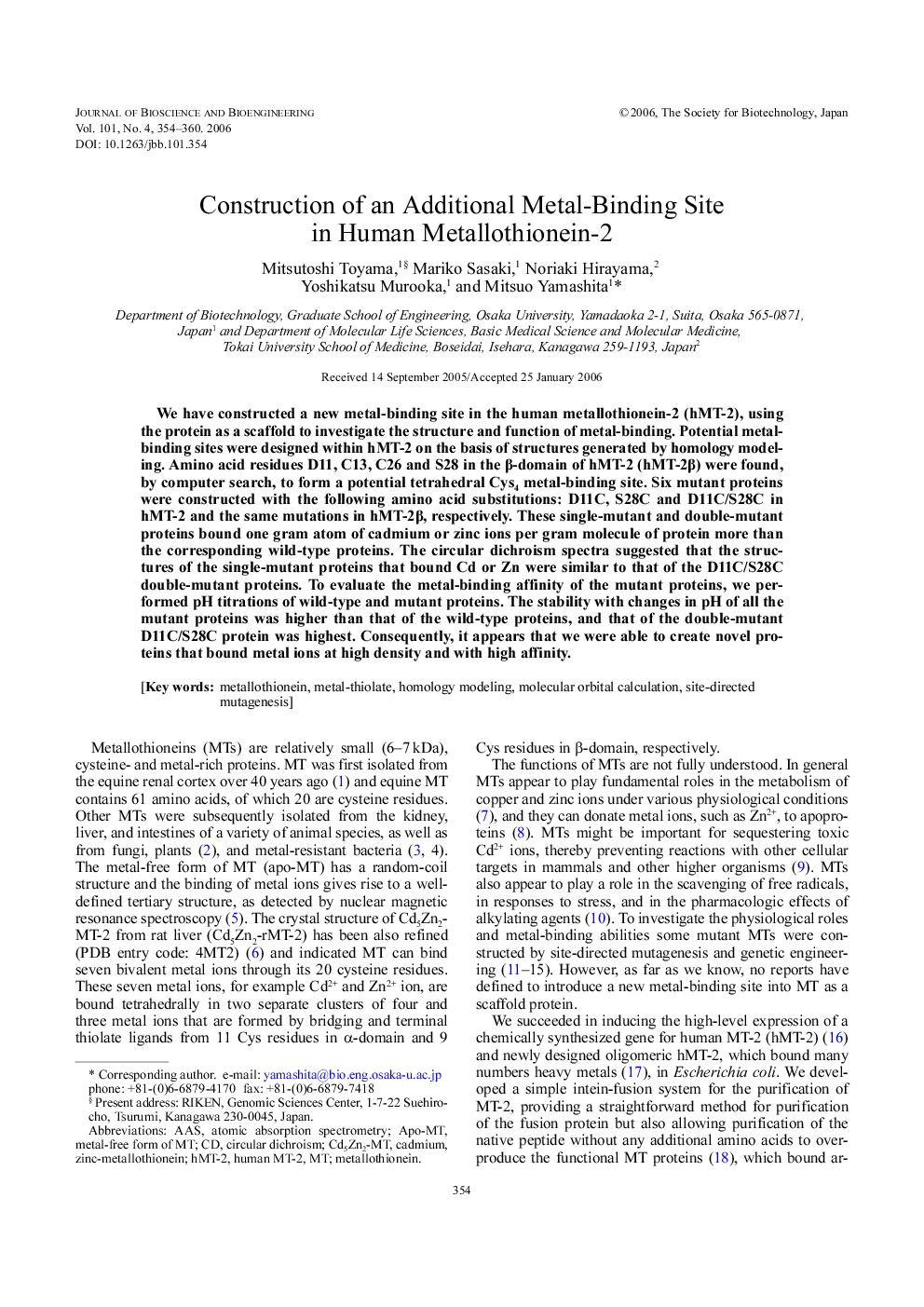| Article ID | Journal | Published Year | Pages | File Type |
|---|---|---|---|---|
| 22170 | Journal of Bioscience and Bioengineering | 2006 | 7 Pages |
We have constructed a new metal-binding site in the human metallothionein-2 (hMT-2), using the protein as a scaffold to investigate the structure and function of metal-binding. Potential metal-binding sites were designed within hMT-2 on the basis of structures generated by homology modeling. Amino acid residues D11, C13, C26 and S28 in the β-domain of hMT-2 (hMT-2β) were found, by computer search, to form a potential tetrahedral Cys4 metal-binding site. Six mutant proteins were constructed with the following amino acid substitutions: D11C, S28C and D11C/S28C in hMT-2 and the same mutations in hMT-2β, respectively. These single-mutant and double-mutant proteins bound one gram atom of cadmium or zinc ions per gram molecule of protein more than the corresponding wild-type proteins. The circular dichroism spectra suggested that the structures of the single-mutant proteins that bound Cd or Zn were similar to that of the D11C/S28C double-mutant proteins. To evaluate the metal-binding affinity of the mutant proteins, we performed pH titrations of wild-type and mutant proteins. The stability with changes in pH of all the mutant proteins was higher than that of the wild-type proteins, and that of the double-mutant D11C/S28C protein was highest. Consequently, it appears that we were able to create novel proteins that bound metal ions at high density and with high affinity.
